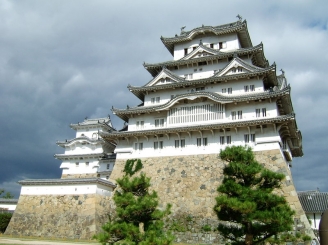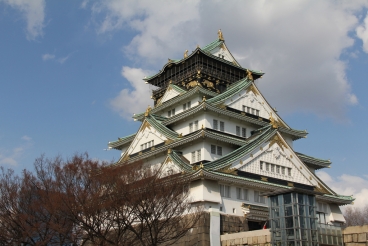Japan is an amazing country. It is situated on the islands of Eastern Asia and is notable for a strange symbiosis of state-of-the-art technologies and ancient original traditions. Japanese samurai with their own customs and rituals, weapons and martial arts have brought world fame to the country. On the other hand, it is a country of cherry blossoms, ancient architecture and wonderful gardens.
Japan is an archipelago of four large islands – Hokkaido, Honshu, Shikoku and Kyushu – and over four thousands of small islands. Due to the geographical location of the islands in the east of the continent, the country is often referred to as the Land of the Rising Sun. Their shores are washed by the Sea of Japan, the East China Sea and the Sea of Okhotsk, and by the Pacific Ocean in the south and east. Most of the islands are covered with mountains and hills. The highest point is Mount Fuji, which is regarded as one of the most beautiful volcanoes in the world. The mount was formed about 100,000 years ago. Since ancient times, it has been considered a sacred place and a fire deity, a subject of worship.
The territory of Japan is rich in volcanoes that favoured appearance of onsens, hot springs. They vary in temperature and composition of their minerals. Since ancient times, their healing properties have been well known. One of the world’s most important places with geothermal hot springs is located in Beppu. Chinoike-Jigoku is a unique hot spring pond, due to the high content of iron oxide coloured in brown, thus better known as Red Blood Hell Pond. Atami, Ibusuki, Nikkō, and Hakone are famous thermal spas as well.
Special love and respect for nature of the Japanese are well known in all over the world. Each empty piece of land immediately turns into a beautiful flower bed, looked after by the entire community. Traditional Japanese gardens will charm you as these beautiful creations are perfect for meditation. Each garden has got its special design and symbolic content. The main elements of a garden are stones and water, symbolising mountains, rocks, seas and rivers. For centuries, many gardens have been located on the territory of temples. The city of Kyoto abounds in Japanese gardens. Till the 19th century, the city had been known as Heian, literally meaning the “city of peace and tranquillity”. Here you can visit more than 2,000 sacred sites: temples, churches, old palaces, as well as beautiful gardens in the Katsura Imperial Villa, in Ryoanji Temple and other places. Hamarikyu Gardens and Kiyosumi Teien located in Tokyo, a capital of Japan, will impress you with their beauty. Shinjuku Gyoen is an amazing park that in the past was the place for walks and rest of the imperial family.
Houses are beautified with Japanese gardens as well. In Japanese cities, you’ll notice an amazing combination of modern urban buildings and ancient wooden structures.
The shrine island of Miyajima welcomes its guests next to the Torii of the Itsukushima Shrine. The Torii, a traditional Japanese wooden gate, has become a sacred symbol of the country. Great Seto Bridge connects two neighbouring islands of Honshu and Shikoku and is a popular tourist attraction.
In the north-east of Tokyo, there is Nikko National Park. Its picturesque lakes, waterfalls, gorges, hot springs, as well as Toshogu Shrine and Rinnoji Temple attract tourists to the park.
Hokkaido has gained its fame thanks to unique nature and climate. This island of virgin nature, fascinating mountains and pure lakes is located in Northern Japan. Here you’ll have an opportunity to go horseback riding, try yourself in river rafting, hiking in the woods or to see dolphins.
Shikoku Island is of particular interest. It is separated from Honshu by the inland sea, that’s why pristine nature, life and culture of old Japan have been so well preserved there. Here you will see many fishing villages, old temples, forested mountains and rice fields.
In Japan, you should definitely visit Nara, the first imperial capital of the state. It is a real open-air museum. Another ancient capital of Japan – Kamakura – is located on the shore of the Pacific Ocean. The country is famous for the island of Kume with its white sand beaches and tropical forests, as well as for waterfalls on Iriomote Island.
Along with its beautiful scenery and unique ancient architecture, the country may surprise you with its art of tea drinking and the rich traditional cuisine. It is believed that the first tea plantations were laid out by a monk in Kyoto in the year of 802. Drinking tea has become popular not only among monks, but also among ordinary citizens and nobles. Today, the tea ceremony is held in a special tea pavilion, where wonderful atmosphere for pleasant mental conversations reigns. In order to feel this atmosphere, visit one of the country's tea pavilions.
The national Japanese cuisine is popular all around the world. Its simple dishes are easy to cook and are always beautifully decorated. You can definitely recognize this cuisine among others by the abundance of seafood, different kinds of fish, octopus, jellyfish, caviar, and seaweed. The main side dish is always rice. For many centuries, rice has been the basis of Japanese food, and today it has not lost its importance. The Japanese consume rice quite often and in large quantities. Various delicacies and sake, rice wine, are made of rice. Sake should be tart, sweet, astringent and bitter at the same time, specialists say.
Pufferfish, fugu in Japanese, is poisonous and one of the Japanese cuisine’s features. Only licensed chefs are allowed to cook this fish in restaurants. To become a master at fugu cooking, chefs should learn for 10 years.
Japan is a country of the old traditions that have been kept and respected here for centuries. Geisha have become a well-known and honoured symbol of Japan. Traditions of their art established in the 19th century have been remained unchanged until today. The most valuable property for geisha was a kimono. Such clothing has not lost its relevance among the Japanese today. Moreover, fashion designers from all over the world use some elements of kimono for many of their models. The country is famous for sumo wrestling and its traditions dated about 2000 years back. The mysterious world of samurai and Japanese martial arts such as kyudo, judo, aikido, karate, and kendo capture imagination of tourists. Noh and Kabuki, classical Japanese drama, should be mentioned as well. You can see one of kabuki performances in the Kabuki-za, a theatre in Tokyo build in the traditional Japanese style. And if you desire to learn traditions of ninja, you should definitely go to the city of Iga with its most famous museum of this art. The Iga-ryū Ninja Museum is located in Iga Ueno Castle, which in the past served as headquarters for the clan of professional assassins.
An integral part of the Japanese culture is ikebana, an art of flower arrangement, the history of which began more than six centuries ago.
Cherry blossom, a national symbol of Japan, is another beautiful reason to come to the Land of the Rising Sun in spring. The most beautiful gardens and parks with cherry blossoms are located in Kamakura, Nara, and Kyoto. Japan hosts popular festivals dedicated to hanami, a traditional custom of cherry blossom viewing. You can enjoy cherry blossoms only for a few days or a week, so television, radio and newspapers report the time of its blooming in different cities as spring approaches. The official opening of the cherry blossoms season is held in Tokyo in Shinjuku Imperial Park.
Japan is a well-known manufacturer of cultured pearls. Mikimoto, a Japanese entrepreneur, was the first to patent pearl farming. Thanks to his unique discovery, the pearl industry has been established in the country. The unique technology for the cultivation of pearls is successfully used today. The most famous pearl farms in Japan are located in the north-west of the island of Kyushu in Sasebo Bay and in the city of Toba.
The Land of the Rising Sun has gained world fame for its vehicles, symbol of elegance and prestige. Sleek and stylish design, comfort, originality, practicality and reliability are the qualities that characterize a Japanese car. Tokyo motor Show, the most important event in the automotive industry and the largest international exhibition of cars, is annually held in Tokyo. Also, you are advised to visitthe Toyota Automobile Museum opened in 1989, one of the best in Japan with a large collection of cars from all over the world. It is located in the city of Nagakute.
Administrative division — Japan
-
Tōkyō Population: 12445327
- Hamamatsu Population: 797462
- Kawasaki Population: 1437266
- Kitakyūshū Population: 983037
- Kōbe Population: 1544873
- Kyōto Population: 1473746
- Nagoya Population: 2266249
- Sagamihara Population: 719677
- Sendai Population: 1031704
- Yokohama Population: 3697894
- Aichi Population: 7418170
- Akita Population: 1063143
- Aomori Population: 1384152
- Chiba Population: 6201046
- Ehime Population: 1476750
- Fukui Population: 799483
- Fukuoka Population: 5071732
- Fukushima Population: 2030463
- Gifu Population: 2077617
- Gunma Population: 1999332
- Hiroshima Population: 2849278
- Hokkaidō Population: 5647230
- Hyōgo Population: 5593786
- Ibaraki Population: 2985424
- Ishikawa Population: 1180935
- Iwate Population: 1416198
- Kagawa Population: 1022843
- Kagoshima Population: 1786214
- Kanagawa Population: 8489932
- Kōchi Population: 813980
- Kumamoto Population: 1859451
- Kyōto Population: 2644331
- Mie Population: 1857365
- Miyagi Population: 2365204
- Miyazaki Population: 1170023
- Nagano Population: 2214409
- Nagasaki Population: 1516536
- Nara Population: 1442862
- Niigata Population: 2475724
- Ōita Population: 1221128
- Okayama Population: 19506560
- Okinawa Population: 1318281
- Ōsaka Population: 8804806
- Saga Population: 876664
- Saitama Population: 6938004
- Shiga Population: 1342811
- Shimane Population: 747838
- Shizuoka Population: 3767427
- Tochigi Population: 2017548
- Tokushima Population: 823997
- Tottori Population: 613229
- Toyama Population: 1120843
- Wakayama Population: 1069839
- Yamagata Population: 1244040
- Yamaguchi Population: 1528107
- Yamanashi Population: 888170


























































